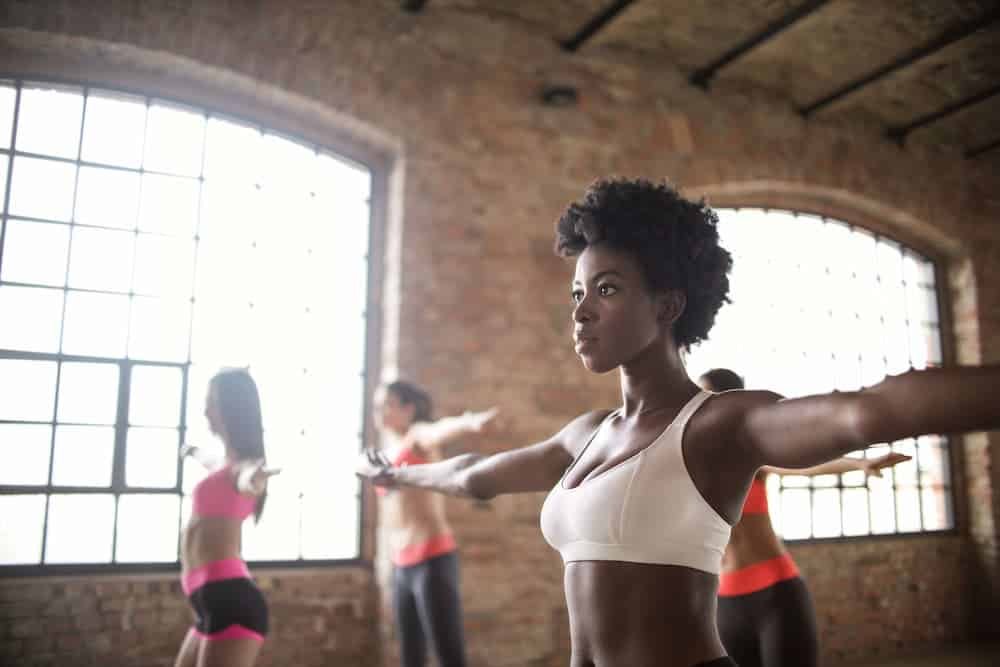14 de June de 2021
Warm up exercise guide for athletes
The warm-up is just as important as the main part of the workout. Its duration is not fixed and will depend on the session or test that we are going to carry out, giving the paradox that the shorter the effort, the longer and more important the warm-up is (Fradkin, Zazryn, & Smoliga, 2010). However, there is a common structure that serves as a guide to introduce our warm-up exercises.
Is it important to warm up before training?
Warm ups performed with different combinations improves performance in 80% of cases, and in almost none does it decrease it (Fradkin et al., 2010). The difference between starting to train cold or increasing the temperature is a performance improvement of 2% to 5% (Racinais & Oksa, 2010). For amateur athletes this percentage does not mean great improvements, but in advanced and elite athletes it can make big differences.
Warming up improves force production by different mechanisms: increases muscle temperature and calcium release, produces vasodilation by increasing blood flow and oxygen supply, increases the metabolism of phosphagens vital for short and intense efforts such as heavy lifting or sprinting; among others (Fradkin et al., 2010).
Warm-up exercises also help us reduce the number of injuries over a wide range, from 2.5 times to 8 times (Woods, Bishop, & Jones, 2007). Increased muscle temperature adds viscosity to the muscle, leading to more harmonic contractions. The analogy can be found with the ketchup bottle: if we try to add sauce without moving the pot, it costs us more because of its thickness, than if we shake it a little and see how that viscosity has improved.
In addition, we are giving a length and range of movement to our contractile structures (muscle, tendon, etc.), and mobility to our joints, to avoid a possible muscle injury.

Perfect warm-up structure
In a very complete seminar of the Strength Symposium held in Madrid a couple of years ago, Iván Gonzalo proposed a guide to warm up for athletes. The duration and focus more on one section or another will depend on our discipline and the time we are going to dedicate to the warm-up. The parts of a complete warm-up, listed in order of execution, are:
- Mobility
- Coordinated cardio
- Tissue release
- Active stretching
- Dynamic heating
- Specific warm-up according to the objective of the session
Pre-mobility: where do we start?
All athletes have days when we feel better or worse. This first contact will help us to free our structures while noticing how we are. The objective in this part is to achieve mobility and stability of our joints, especially shoulders, hips, ankle and spine.
An example that focuses on the shoulders is this video where we prepare that area for sessions where we are going to perform heavy lifting of the upper body, such as the bench press, or for throwing disciplines such as handball or javelin throw.
Stick mobility exercises also have a place here. This video can give you several ideas of exercises to do. The spine also needs to be mobilized with exercises like this one on TRX, for example.
Coordinating cardio
Once we have evaluated how we got to the session and have slightly mobilized some structures, we focus on increasing the temperature and putting all the systems to work. For this, it would be enough to perform a few minutes of cardio (5 – 10 minutes are more than enough).
From the basics that would be to use a cardiovascular machine such as a treadmill, bicycle, rowing … To more coordinative work where we put agility ladders or coordinative work with rope.
Soft tissue release. Myofascial release
The use of the foam roller has spread to most sports centers over the last few years. The time to use it is after cardio and before stretching. Michael Boyle, a reference coach, exposes the analogy of a rope with a knot. If we skip this soft tissue release step and move on to the rest of the warm-up, it will be like pulling the ends of the rope, making that knot tighten more and more.
First we must loosen that knot using massage tools, and once the rope is loosened we can continue with the stretching and for a more dynamic warm-up. We will mainly attack the structures that we are going to use in the session; for example a heavy lifter would focus on the pectoral, dorsal and lumbar spine, while a runner would be more interested in releasing calves, quadriceps, hamstrings and glutes.
When we use the foam roller as a warm-up, the motions must be fast and shallow, since slow and deep can cause a decrease in performance in the session carried out next (Devereux, OʼRourke, Byrne, Byrne, & Kinsella, 2019). Those kinds of slower and deeper motions will be left for another time like recovery.
Dynamic stretching: one of the great concerns
Scientific evidence clearly shows us that it is not advisable to perform static stretching prior to a session with demand for strength (Behm & Chaouachi, 2011). Taking into account that strength is practically everything, since resistance is nothing more than applying force for a long time, we must avoid static stretching in the warm-up.
Instead it is useful to perform active stretching, which at first glance is the same as passive stretching, but while we are stretching a muscle we must be exerting force to make it contract. Taking as an example the typical quadriceps stretch where we stretch one foot while standing. Instead of remaining passive, we can exert force against the hand trying to contract the quadriceps while stretching it.
Therefore, we must limit passive stretching in the warm-up, but we can use passive stretching, since they do not show this decrease in performance in strength tasks (Simic, Sarabon, & Markovic, 2013). In any case, this section overlaps with the next one, the most important of the warm-up, and more interesting than the stretches themselves.
Dynamic heating
Instead of doing active stretching, and of course much more recommended than passive stretching, we will perform a dynamic warm-up. A long list of possible exercises will be explained here. It is a true art to design this part of the warm-up.
In this Bobby Smith session designed for the National Strength and Conditioning Association, an extended dynamic warm-up is shown in which we can see the types of exercises we can use. Some exercises in this session are similar to those in our first section: joint mobility.
It is because many authors skip that first section and introduce everything here. Choose what feels best for you, but it is a quite viable option, so we start directly with the coordinated cardio and that first step that we have skipped would fall within this block of warm-ups.
The activation of the core is a fundamental part of the dynamic warm-up since that musculature will be used in the training session almost always: it transmits forces during the race, stabilizes exercises such as squats and deadlifts, and it is activated in almost all sports disciplines.
Specific warm-up according to the objective of the session
As a link between warm-up and the main part, we will attack structures and muscles that will be demanded during the session. If we are going to work on strength and power, it will be interesting to introduce plyometrics, throws, sprints and variants of Olympic lifts here.
In a specific strength work we will put here the approximation series to the exercise, such as a deadlift, ending with a heavy lift that serves as post activation potentiation (PPA). It consists of performing series of approximations until finishing with a lift close to our 1RM (85% – 90% of 1RM) and leaving enough time of about 5 – 7 minutes to dissipate fatigue before starting the programmed work (Garbisu-Hualde & Santos-Councilor, 2021).
The objective of this work is to prepare our nervous system so that when we start the first series it is already effective and we are fully activated. We will be able to lift more load and / or more speed than if we had not carried out that post activation enhancement.
References
- Behm, D. G., & Chaouachi, A. (2011, November). A review of the acute effects of static and dynamic stretching on performance. European Journal of Applied Physiology. Eur J Appl Physiol. https://doi.org/10.1007/s00421-011-1879-2
- Devereux, F., OʼRourke, B., Byrne, P. J., Byrne, D., & Kinsella, S. (2019). Effects of Myofascial Trigger Point Release on Power and Force Production in the Lower Limb Kinetic Chain. Journal of Strength and Conditioning Research, 33(9), 2453–2463. https://doi.org/10.1519/JSC.0000000000002520
- Fradkin, A. J., Zazryn, T. R., & Smoliga, J. M. (2010). Effects of warming-up on physical performance: A systematic review with meta-analysis. Journal of Strength and Conditioning Research, 24(1), 140–148. https://doi.org/10.1519/JSC.0b013e3181c643a0
- Garbisu-Hualde, A., & Santos-Concejero, J. (2021). Post-Activation Potentiation in Strength Training: A Systematic Review of the Scientific Literature. Journal of Human Kinetics, 78(1), 141–150. https://doi.org/10.2478/hukin-2021-0034
- Racinais, S., & Oksa, J. (2010, October). Temperature and neuromuscular function. Scandinavian Journal of Medicine and Science in Sports. Scand J Med Sci Sports. https://doi.org/10.1111/j.1600-0838.2010.01204.x
- Simic, L., Sarabon, N., & Markovic, G. (2013). Does pre-exercise static stretching inhibit maximal muscular performance? A meta-analytical review. Scandinavian Journal of Medicine and Science in Sports, 23(2), 131–148. https://doi.org/10.1111/j.1600-0838.2012.01444.x
- Woods, K., Bishop, P., & Jones, E. (2007). Warm-up and stretching in the prevention of muscular injury. Sports Medicine. Sports Med. https://doi.org/10.2165/00007256-200737120-00006

